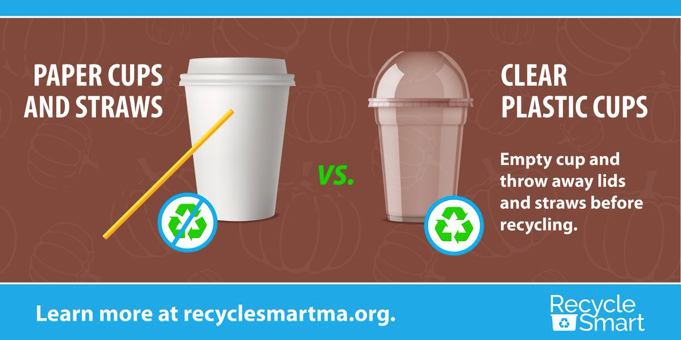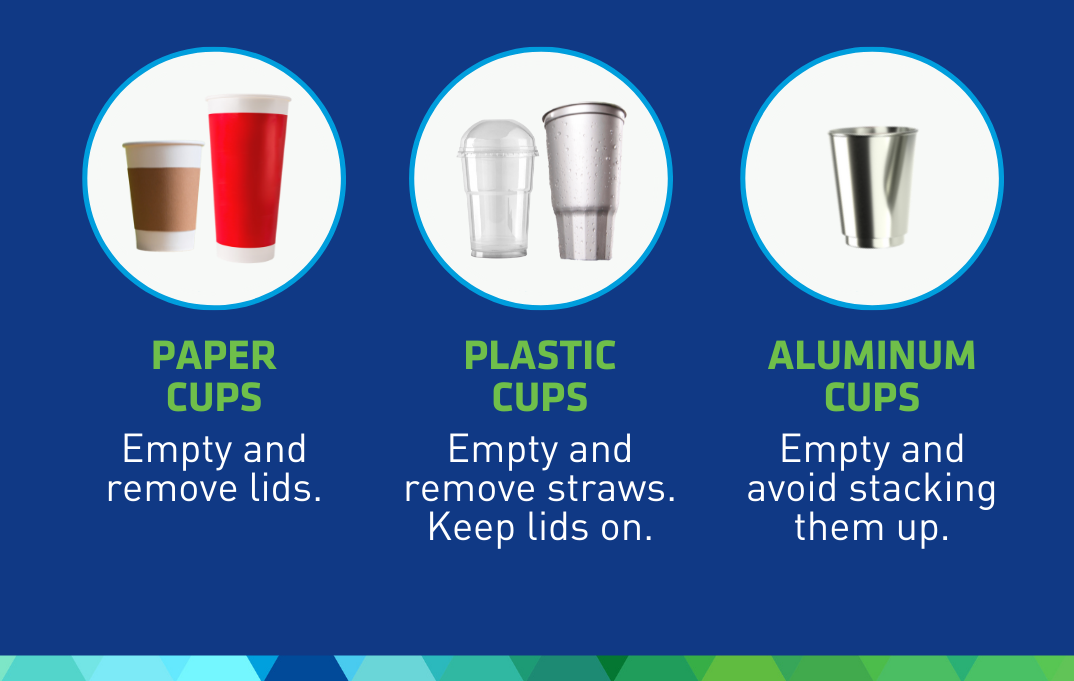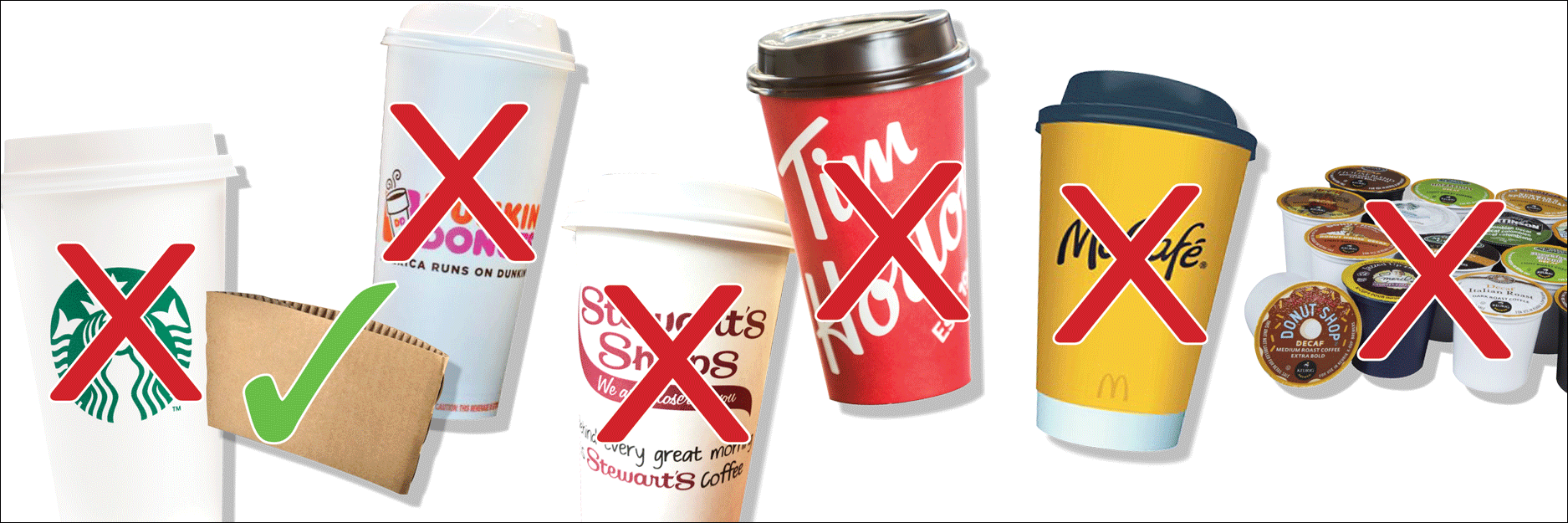Can You Recycle Paper Cups?

Recycling paper cups raises many questions, as it involves complex processes and materials. Let’s dive deep into the topic and explore various aspects of paper cup recyclability.
What makes paper cups difficult to recycle?
Paper cups are complicated due to their unique construction. While they appear to be made entirely from paper, they usually have a lining made of plastic. This lining is commonly polyethylene, which makes these cups waterproof and suitable for hot beverages. Unfortunately, this plastic lining complicates the recycling process. Recycling facilities often struggle to separate the paper from the plastic. This means that even though the majority of the cup is paper, the presence of plastic makes it largely non-recyclable.
Why are some paper cups considered non-recyclable?
Not all paper cups can be accepted in regular recycling programs. The main reason is that many standard recycling facilities do not have the capability to process items with plastic components. In fact, about 99.75% of paper coffee cups are not recyclable because of their plastic linings. Contamination also plays a role; if a cup is dirty from food or drinks, it is less likely to be recycled efficiently. This leads to a significant waste stream where cups that could be reused often end up in landfills.
How does the plastic lining affect the recycling process?
The plastic lining in paper cups plays a crucial role. While it helps keep drinks hot or prevents leaks, it also hinders recycling. During the recycling process, the cup is shredded, but the separation of plastic from paper is difficult. The facilities essentially must create two separate streams for these materials. Most facilities simply landfill the incoherent mixture instead of attempting to process it. This adds to environmental concerns, as significant waste is generated.
Are there any types of paper cups that can be recycled?
Yes, there are some paper cups designed to be recyclable. Companies are beginning to innovate and create cups made with recyclable materials that utilize biodegradable lining. Some cups use polylactic acid (PLA), which can be composted commercially under suitable conditions. It’s vital, however, for consumers to verify whether their local facilities accept such cups, as recycling capabilities vary widely.
What is the current recycling success rate for paper cups?
The recycling success rate for paper cups is very low. As stated, only about 1% of paper coffee cups are successfully recycled. This is mainly because of the existing infrastructure and technology to process them efficiently. According to the Environmental Protection Agency (EPA), approximately 50 billion coffee cups are discarded each year in the U.S. alone. This striking number highlights the urgency of enhancing recycling systems and providing effective solutions.
| Statistic | Value |
|---|---|
| Paper coffee cups discarded yearly | 50 billion in the U.S. |
| Recycling success rate | 1% |
| Non-recyclable paper cups | 99.75% |
How can consumers verify the recyclability of their local recycling facilities?
Consumers can take several steps to determine if their local recycling facilities accept paper cups. First, they can visit their municipality’s website or contact their local waste management office for specific guidelines. Many recycling centers provide a list of accepted materials, and knowing these can help avoid improper disposal. Users can also look for signs at coffee shops and cafes that indicate whether they have implemented recycling initiatives.
What are common misconceptions about paper cup recyclability?
Many people mistakenly believe that paper cups are recyclable just because they are made of paper. This misconception can lead to "wishcycling", where individuals put non-recyclable items into the recycling bin hoping they will be processed. This behavior increases contamination levels, making recycling more difficult. Additionally, the recycling symbol on cups can create a false sense of security about their recyclability, which can be misleading.
How does contamination affect the recycling of paper cups?
Contamination significantly impacts the recycling process for paper cups. If a cup has any leftover drink or food spills, it becomes more challenging for recycling facilities to process. Studies show that around 60% of paper cups are not recycled due to contamination and lack of specialized facilities. When contamination occurs, it can compromise the quality of recycled paper products and lead to higher disposal rates.
To sum it up, while many aspects of paper cup recycling are complex, understanding the intricacies can help consumers make better disposal choices. Shifting toward more sustainable practices, such as using reusable cups, can significantly reduce the environmental impact of paper cup waste. Supporting businesses that prioritize recyclable options and staying informed about local recycling guidelines can also play a part in addressing this pressing issue.
What Are the Alternatives to Recycling Paper Cups?

Paper cups have become a common sight in our lives, especially at coffee shops and fast-food restaurants. Unfortunately, they present significant challenges when it comes to recycling. The primary issue is the thin layer of polyethylene plastic that lines most paper cups. This liner helps keep beverages hot and prevents leaks, but it makes recycling very difficult. Only about 1% of paper coffee cups are actually recycled successfully. Let's explore some alternatives to recycling paper cups and their environmental impact, along with innovative solutions.
What are the differences between biodegradable and recyclable paper cups?
Biodegradable and recyclable paper cups differ mainly in their composition and how they break down. Recyclable paper cups usually contain a plastic lining, which complicates the recycling process. They often end up in landfills because most recycling facilities can’t separate the paper from the plastic lining. On the other hand, biodegradable paper cups can decompose in the right conditions, breaking down within 90-180 days. However, they still require specific facilities to ensure proper decomposition. In essence, while recyclable cups aim to become new products, biodegradable cups aim to return nutrients to the earth.
| Kupin tyyppi | Hajoamisaika | Kierrätettävyys | Huomautukset |
|---|---|---|---|
| Recyclable Paper Cup | Not specified | Often non-recyclable | Contains plastic lining |
| Biodegradable Cup | 90-180 days | Not generally recyclable | Decomposes in composting facilities |
How effective are compostable paper cups in reducing waste?
Compostable paper cups can be an effective way to minimize waste when managed correctly. Unlike traditional paper cups, these cups can break down in composting facilities, often transforming into nutrient-rich soil. However, many local composters do not accept them, highlighting a crucial limitation. While they present a greener option in theory, the lack of proper composting facilities can make them less effective in practice. Thus, they can only contribute significantly to reducing waste when the necessary infrastructure supports them.
What innovative materials are being used for new sustainable cups?
Several companies are innovating new materials for sustainable cups, including those using plant-based plastics and biomaterials. For instance, some cups now come lined with polylactic acid (PLA), a compostable bioplastic made from corn starch. This lining allows the cup to break down in commercial composting settings within 60 days. Some emerging materials also include sugarcane fibers and bamboo, both renewable resources that reinforce the cup's compostability. Importantly, companies must follow standards like EN 13432 to ensure that their products are genuinely sustainable.
What are some eco-friendly alternatives to disposable paper cups?
When searching for alternatives to disposable paper cups, several options stand out:
- Reusable Mugs: Users can bring their mugs to coffee shops, often receiving discounts for doing so.
- Lasikupit: Durable, glass cups can be reused many times and provide a stylish solution.
- Bambu kupit: Made from bamboo fiber, these cups are eco-friendly and degrade naturally.
- Ruostumattomasta teräksestä valmistetut kupit: These offer durability and insulation, suitable for hot or cold drinks.
- Silikonikupit: Lightweight and flexible, they are perfect for on-the-go and are dishwasher safe.
These alternatives cut down significantly on waste while encouraging sustainable habits.
How can businesses encourage the use of reusable cups?
Businesses can play a pivotal role in minimizing paper cup use by:
- Incentivizing Reuse: Provide discounts or rewards for customers who bring their reusable cups.
- Offering Discounts: Encourage coffee shops to give a small discount to customers who choose reusable options.
- Running Campaigns: Organize awareness campaigns highlighting the environmental impact of disposable cups.
- Providing Reusable Options: Sell branded reusable cups and eco-friendly alternatives in stores.
By creating an environment that promotes sustainability, businesses can empower customers to make smarter choices.
What are the environmental benefits of switching to reusable options?
Switching to reusable cups leads to various environmental benefits, including:
- Vähennetty jäte: Each reusable cup you use decreases the number of disposable cups sent to landfills.
- Lower Resource Consumption: Producing reusable cups often uses fewer resources compared to manufacturing paper cups each time.
- Less Pollution: With fewer cups in circulation, companies can decrease the carbon footprint associated with shipping and waste management.
These benefits highlight how simple choices, like using reusable cups, can bolster sustainability efforts.
How do new packaging innovations impact the paper cup industry?
Innovative packaging solutions are disrupting the traditional paper cup industry. Companies are exploring biodegradable and compostable materials, striving to align business practices with consumer demand for sustainability. Major cities like Amsterdam and San Francisco are already banning non-recyclable cups to promote these innovations. For instance, some companies are now using mushroom-based materials instead of plastic linings. These changes not only improve the environmental footprint but also reshape how the industry views waste management. As consumer awareness about the impact of paper cups grows, businesses must adapt to this evolving landscape.
In summary, the time has come to rethink how we use paper cups. While recycling can prove challenging, understanding biodegradable and compostable materials offers new avenues for reducing waste. By shifting toward reusability and innovations, we can pave the way for a more sustainable future.
How Can Communities Improve Paper Cup Recycling Programs?

Paper cups are a common sight in numerous cities. Unfortunately, they often end up in landfills rather than being recycled properly. Many factors contribute to this issue, including changes in recycling laws, best practices, and how we can work together as communities to improve recycling efforts for these cups.
How have recent changes in recycling laws affected paper cup disposal?
Changes in recycling laws have highlighted the complexity of recycling paper cups. Traditionally, paper cups are lined with a thin layer of plastic, known as polyethylene. This lining makes the cups non-recyclable in most standard facilities. When communities enforce new recycling laws, they often do not consider the specific needs of paper cup disposal. As a result, many local recycling programs treat paper cups like regular paper items. The truth is, about 99.75% of coffee cups cannot be recycled due to the plastic lining, which complicates the separation process at recycling facilities.
Despite these challenges, cities are slowly beginning to enforce bans on non-recyclable cups, as seen in Amsterdam and San Francisco. These laws promote environmental sustainability and push manufacturers to develop environmentally friendly alternatives. However, until more states mandate recycling regulations tailored to paper cups, these cups will likely continue to be discarded improperly.
What best practices can communities adopt for improving paper cup recycling?
Communities can adopt several best practices to improve paper cup recycling programs. Here are some effective strategies:
-
Educate Residents: Providing clear information about the recyclability of paper cups is crucial. Use community workshops, social media campaigns, and educational pamphlets to raise awareness.
-
Create Drop-off Locations: Establish dedicated recycling bins for paper cups in high-traffic areas. Clearly mark these bins to help users identify where to dispose of their cups correctly.
-
Partner with Businesses: Collaborate with local coffee shops and restaurants to promote better disposal practices. These establishments can encourage customers to bring reusable cups by providing incentives or discounts.
-
Implement "Wishcycling" Prevention Programs: Wishcycling occurs when people try to recycle items that aren't recyclable. Educating the public about what can and cannot be recycled helps prevent this practice.
-
Invest in Specialized Recycling Infrastructure: Communities can develop or partner with facilities designed specifically to manage paper cup recycling, ensuring they have the right technology to separate materials correctly.
| Best Practice | Toiminta |
|---|---|
| Educate Residents | Use workshops and campaigns to inform the public |
| Create Drop-off Locations | Designate bins for paper cup recycling in public areas |
| Partner with Businesses | Collaborate with local shops to promote recycling |
| Implement "Wishcycling" Prevention | Educate the public on proper recycling methods |
| Invest in Specialized Infrastructure | Develop partnerships with facilities focused on recycling |
Are there cities with successful recycling programs for paper cups?
Yes, some cities have already adopted successful recycling programs for paper cups. For example, San Francisco stands out due to its robust waste management initiative. The city has established programs to divert waste from landfills and prioritize materials that have recycling pathways, including a careful processing focus on paper cups.
Amsterdam is also a leader in this sector. The city emphasizes the reduction of paper cup waste through well-enforced bans on non-recyclable cups and promotes reusable options among its residents. By showcasing these successful case studies, other communities can be inspired to adopt similar strategies to improve paper cup recycling.
What role do coffee shops play in promoting sustainable cup use?
Coffee shops play a significant role in promoting sustainable cup use. They are on the frontline of coffee consumption and have the potential to shift consumer habits. Here are a few ways coffee shops can contribute:
-
Encourage Reusable Cups: Many coffee shops offer discounts to customers who bring their reusable cups. This practice not only reduces waste but also motivates customers to invest in a reusable option.
-
Serve with Awareness: Shops can choose to source cups that are made from recyclable or compostable materials. Doing so increases the likelihood of responsible disposal habits among their customers.
-
Host Community Initiatives: Coffee shops can organize campaigns focused on the importance of sustainability, incorporating discussions about paper cup waste and solutions to address it.
How can consumers contribute to better recycling habits?
Consumers also have an essential part to play. By taking personal responsibility for their habits, they contribute significantly to paper cup recycling. Here’s how you can help:
-
Verify Local Recycling Rules: Before disposing of paper cups, check your local recycling guidelines to ensure you are following proper disposal practices.
-
Choose Reusable Options: Investing in a reusable cup sends a powerful message about sustainability. Additionally, many stores reward customers with discounts for choosing to bring in their cup.
-
Spread the Word: Share knowledge about proper recycling habits with friends and family. The more people know about the issues surrounding paper cup waste, the better the chances for change.
What statistics illustrate the scale of paper cup waste?
Statistics provide a stark reminder of the impact of paper cup waste. In the U.S. alone, around 50 billion coffee cups are discarded every year. In the UK, estimates suggest that over 300 million paper cups were used by consumers in just 2020. Unfortunately, despite these high numbers, only 1% of all coffee cups are successfully recycled due to contamination and the lack of specialized recycling facilities.
Each year, the number of disposable coffee cups used only increases, highlighting the urgency for better recycling practices. By acknowledging these statistics, we can understand the critical need for improved recycling methods and the promotion of sustainable alternatives.
How can local initiatives raise awareness about the importance of proper disposal?
Local initiatives can be game-changers when it comes to raising awareness about the proper disposal of paper cups. Here's how they can do it:
-
Organize Clean-up Events: Communities can host clean-up days that focus on removing paper cup waste from public spaces. This engagement educates residents about the effects of littering while fostering a sense of community.
-
Involve Schools: Educational programs in schools can shape children’s views on sustainability from a young age, creating a generation of informed consumers.
-
Use Visual Campaigns: Effective signage and visuals placed near recycling and trash bins can guide consumers on proper disposal methods. Eye-catching designs can draw attention and drive better recycling behaviors.
By following these guidelines and leveraging the power of community awareness, we can significantly improve paper cup recycling programs and protect our environment for future generations.
FAQs about Can You Recycle Paper Cups?
Q: What makes paper cups difficult to recycle?
A: Paper cups are difficult to recycle primarily because of their plastic lining, which complicates the separation of paper from plastic during the recycling process.
Q: Why are some paper cups considered non-recyclable?
A: Some paper cups are considered non-recyclable because most standard recycling facilities lack the capability to process items that contain plastic components, resulting in about 99.75% being sent to landfills.
Q: How does the plastic lining affect the recycling process?
A: The plastic lining in paper cups hinders the recycling process by complicating the separation of materials, often resulting in the entire cup being landfilled rather than recycled.
Q: Are there any types of paper cups that can be recycled?
A: Yes, some paper cups designed with recyclable or biodegradable materials can be accepted, but it is crucial to check local facility guidelines for acceptance.
Q: How can consumers verify the recyclability of their local recycling facilities?
A: Consumers can verify the recyclability of their local facilities by visiting municipal websites or contacting waste management offices for specific recycling guidelines.
In this article, we explored the challenges of recycling paper cups. Many cups have a plastic lining that complicates the process. Not all paper cups are recyclable, and contamination can hurt recycling rates. We discussed alternatives like compostable cups and ways communities can improve recycling practices.
To wrap up, it's clear we need to be more aware of our choices. By pushing for better recycling and using reusables, we can make a real difference. Together, we can reduce paper cup waste and protect our environment.
